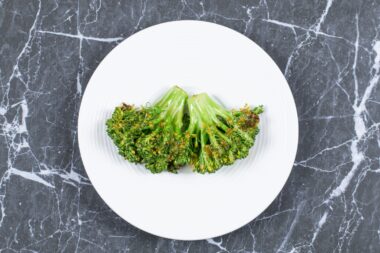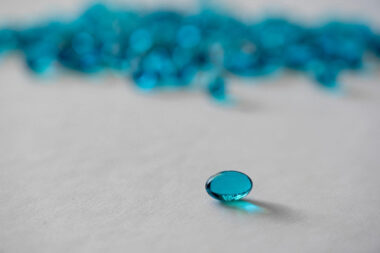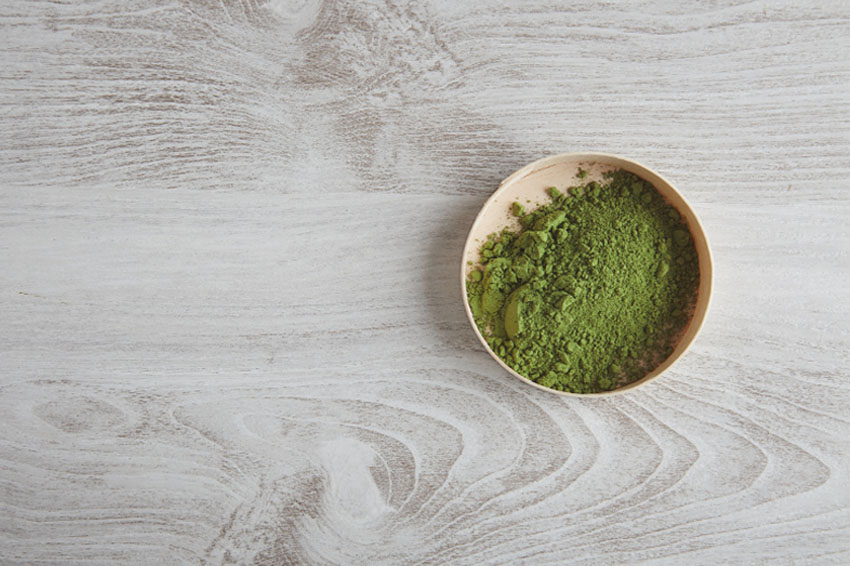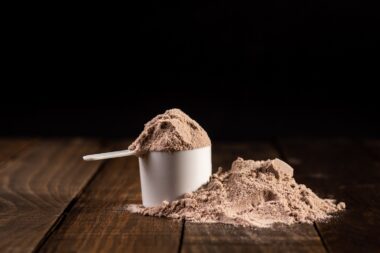A plant-based salt called “Green Salt” has 50% less sodium than regular salt. A salt substitute made of plants from Baja California. This green salt, which is likewise green in color and bears the name “Green Salt,” has less sodium than conventional salt. You get the same salty flavor yet it’s healthy for your heart. The Noriega family, who have been cultivating Salicornia for 20 years, produces green salt in Baja California, Mexico.
Salicornia (Glassworts) is dehydrated and ground into a powder to make green salt. A vegetable that grows beside the sea is called salicornia. It belongs to the same family as amaranth and quinoa.
In scientific investigations, salicornia has demonstrated preventive properties against high blood pressure (Food and Function Journal 2015). A halophyte is a plant that can survive in saline environments, such as salicornia.
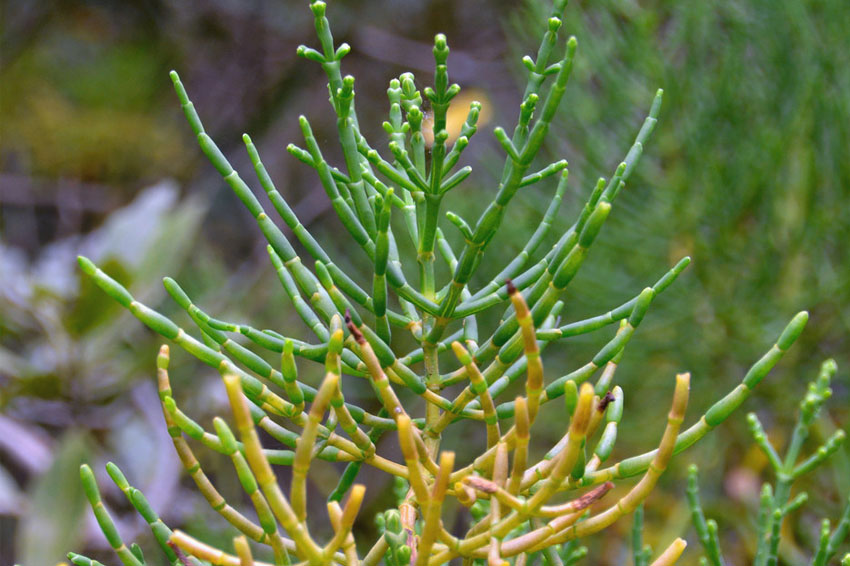
A salicornia plant
The salinity of salicornia is due to the variety of minerals it contains. It is a nutrient-dense superfood with known anti-inflammatory and hypotensive qualities. Other names for it include pickleweed, glasswort, hamcho, samphire, and—possibly most frequently—sea beans or sea asparagus. It organically grows in marshes and saline coastlines all over the world.
Salicornia has been produced and consumed for generations in Europe and Asia, particularly in Korea, despite the fact that it is not very commonly accepted outside of upscale cocktail lounges and fine-dining establishments in the United States. It is often consumed raw, cooked, or pickled, and is prized for its savory, crunchy texture, salty flavor, and nutrient content.
Green Salt has a delicious and salty flavor. It has an unpleasant flavor that some people associate with fish. The concentration of chlorophyll is what gives it its green hue.
Application for Green Salt
Manufacturers of Green Salt claim it can be used as a substitute for regular salt in both baking and cooking. However, due to its lower sodium content, achieving the same level of saltiness may require using twice as much Green Salt compared to conventional salt.
Although Green Salt is a viable replacement for ordinary salt, certain characteristics may influence its use. For example, dishes prepared with Green Salt may develop a slight green tint, and in some recipes, it might not fully dissolve depending on the cooking method or food type.
Here are some practical ways to incorporate Green Salt into your cooking:
- Cooking and Baking: Substitute Green Salt for regular salt in recipes, keeping in mind the need for a slightly larger quantity due to its lower sodium content.
- Finishing Salt: Sprinkle over cooked rice varieties like basmati or Carolina Gold to enhance both flavor and presentation.
- Seafood Pairing: Its briny, pungent flavor pairs excellently with seafood, complementing the natural taste of fish and shellfish.
- Plant-Based Dishes: Boosts the flavors of vegetables, grains, and legumes, adding depth and complexity to plant-based meals.
- General Use: Use Green Salt like sea salt to enrich soups, roasted vegetables, and salads, adding a vibrant, salty profile to your dishes.
Whether you’re enhancing the aroma of a steaming bowl of rice or accentuating the natural flavor of seafood, Green Salt brings a unique twist to your culinary creations. Its versatility makes it an excellent choice for health-conscious cooks seeking a flavorful, nutritious alternative to traditional salt.
What is the Difference?
Many low-sodium salt alternatives rely on potassium chloride, a compound known for its metallic and slightly bitter taste. While potassium chloride can reduce sodium intake, it poses risks for individuals with kidney conditions, as their bodies may struggle to process excess potassium.
Green Salt offers a unique solution. It mimics the salty flavor of traditional salt without the bitterness associated with potassium chloride-based substitutes. Moreover, its potassium content is minimal—only 10mg per 1.5g—making it a safer option even for those with renal health concerns.
Another defining difference is its natural composition. Derived from salicornia, a nutrient-dense coastal plant, Green Salt is free from artificial additives, offering a clean and authentic taste. Its naturally salty flavor and nutritional profile make it a standout choice for those seeking a healthier, more flavorful salt alternative.
Is Green Salt Beneficial for You?
Green Salt is a game-changer for individuals committed to reducing sodium in their diets. Traditional salts, including kosher and sea salts, are composed of approximately 40% sodium by weight. In contrast, Green Salt contains 50% less sodium, providing a healthier option for flavoring food without compromising taste.
High sodium intake is linked to several health concerns, including hypertension and cardiovascular issues. For those striving to maintain a low-sodium diet, substituting Green Salt for regular salt can be a practical step toward better health. Its lower sodium content may also benefit individuals managing conditions like kidney disease or heart problems, where sodium restriction is crucial.
Beyond its sodium benefits, Green Salt retains essential minerals from its salicornia origins, contributing to its nutritional value. As part of a balanced diet, Green Salt can support overall wellness while keeping meals flavorful and satisfying.
How Durable is Green Salt?
The Noriega family, the creators of Green Salt, have embraced sustainability in every aspect of their production process. Grown organically on land unsuitable for traditional farming, salicornia thrives in challenging conditions. Unlike conventional crops that require freshwater, salicornia is irrigated with saltwater, conserving valuable freshwater resources.
The eco-friendly approach doesn’t stop there. After harvesting, salicornia is dried using solar energy, further minimizing its carbon footprint. Packaging is designed with sustainability in mind, using recyclable or biodegradable materials whenever possible.
This commitment to environmental responsibility ensures that Green Salt is as sustainable as it is healthy. In a world facing increasing scarcity of arable land and freshwater, salicornia’s cultivation stands as a model of eco-conscious agriculture.
For those seeking a long-lasting, health-conscious salt alternative, Green Salt ticks all the boxes. It stores well in a cool, dry place, retaining its flavor and quality over time. With its sustainable origins and versatile applications, Green Salt is an excellent choice for both your kitchen and the planet.
Conclusion
For those wishing to consume less sodium while protecting their cardiovascular health, green salt is the ideal solution. It might be opportune to sample Green Salt and broaden your salt horizons. It may be used as a straight substitute for salt in recipes, but because it has less sodium, you might need to use twice as much to get the same amount of saltiness.
Additionally, be aware that Green Salt may give your meal a subtle green tinge depending on the recipe. Experts advise reserving it just for use as a finishing salt if you wish to prevent that.
If you’re curious to give it a try, experts suggest adding some green salt to this salmon rice bowl or this cauliflower rice that has been infused with herbs.
Thumbnail Credit: bublikhaus

Anvi has done Bachelor’s and Master’s in Nutrition and Dietetics. She’s planning to do a Ph.D. in Public Health Nutrition moving forward.









